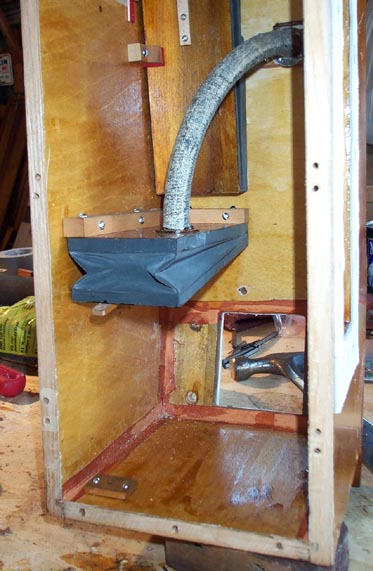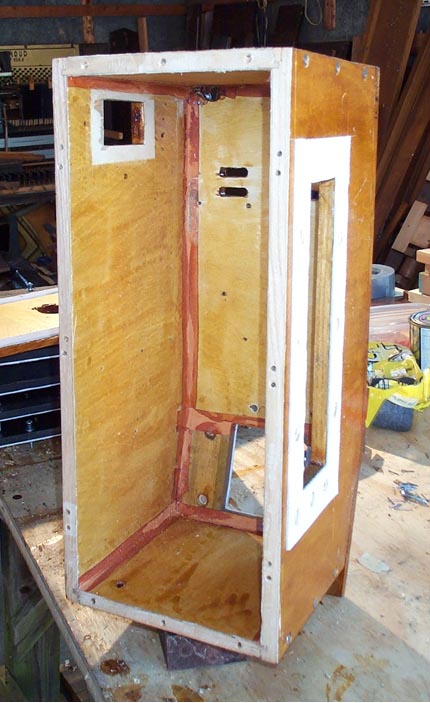
Chapter 5.2 - The Bass Stop Action Box
This oddly shaped box serves two functions. It has gasketed openings on three sides, which connect and support major components of the instrument The one on the rear, facing the front of the organ, flanges up to the reservoir, and is the wind conductor for the whole bass half. On its right side, another opening conducts the wind to the stop action chest for the bass half of the six main ranks. The opening on the left side supplies wind to the 13 note sub bass chest that hangs below the keybed. The box also contains two stop actions; one opens a pallet over the left opening to actuate the sub bass rank, the other opens a mute which creates the louder version of the two 16' stops.
The sub bass chest itself is rather heavy, and was supported two ways; by being rigidly screwed and gasketed to this box, and by having its upper cover, the spreader board (see chapter 5.1) screwed to the lower edge of the channel board arrays at the upper back of the organ. The box was originally made by gluing together its five panels from 5/8" oak limber core plywood with poplar crossbanded surfaces. This plywood must have been from a bad lot; wherever it was used it gave me problems because the crossbanding was glued only in streaks, and had delaminated in many places. The use of bad quality wood is very rare for Aeolian. I shall have to speak harshly to thier purchasing agent about this! The oak core is strong, but when the veneer came undone, so did the glued joints in the box. The weight of the sub bass chest, now unsupported by the box, caused the chest to fall downward at the center. However, the spreader board forming the lid of the sub bass chest remained screwed to the lower edge of the channel boards. The #6 screws holding the spreader board to the sub bass chest stripped and pulled out.
The first step was to knock what was left of the box apart and scrape off the veneer. The bad gluing job made this relatively easy, except at some of the exposed edges. A prior owner, thinking that the visible delamination was merely an aesthetic defect, had dribbled white glue into the gaps to try to mend this. Most of the veneer, poorly attached with hot glue, came off easily with a chisel and cabinet scraper. But the areas of the core saturated with white glue needed a lot of tedious cutting, scraping, and sanding to make the core pieces flat there.
New paper backed birch veneer was applied to both sides of all the pieces with contact cement. Since I can not depend on this remaining intact under the places where the box is joined together at the edges with glue, many #10 x 1-1/2" screws were added along these joints. Now the box is strong enough to perform its support function reliably.

All the inner corners were sealed with leather strips, and the whole thing was masked and shellaced. See in the background the box lid, also prepared the same way. For some reason, there is a big hole in the center of the lid, with a factory made gasketed cover. which was repacked and replaced. Maybe this hole was for an optional second 16' rank, a possibility mendioned in MMD. Gaskets for the the box openings were made.
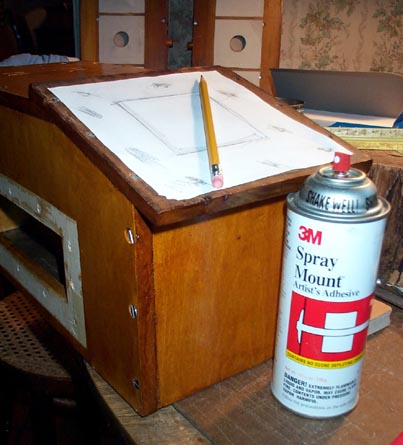
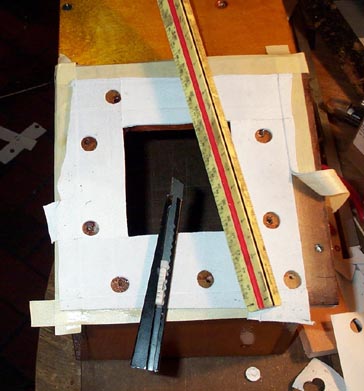
There are two primaries and pulldowns in the box. One works the pallet that controls the wind to the sub bass chest. I releathered the pallet at the same time i did the upper stop pallets, and recovered the pulldowns when I did the other stop pulldowns. The operation is obvious from the picture.
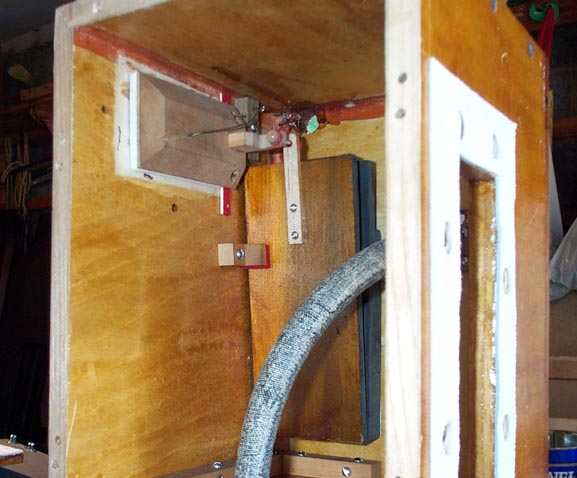
The second action pulls up on a wire (not shown) going through a seal made from thin leather with a tiny hole punched in the middle. This long wire actuates the half-stop mute on the bottom of the bass chest lower resonator box.
